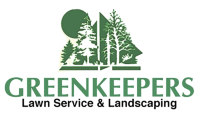Mulching
After planting a tree, or installing a planting bed, cover the bed or tree pit area with shredded mulch (hardwood bark). The application of mulch benefits the beds in the following ways:
- Mulch reduces the need for watering by helping retain soil moisture;
- Mulch stabilizes the soil temperature;
- Mulch adds needed organic matter to the soil as it decompresses;
- Mulch reduces the weed population in plant and tree beds; and
- Pine and hardwood bark mulch reduce the population of certain disease pathogens in the soil.
Mulch should be supplemented to replace that which has been lost due to wind and decomposition. It should be spread evenly at a total depth of not more than 3 inches when reapplied. One to two inches of mulch can be applied yearly as long as the total depth of mulch does not exceed 3 inches. Mulch should be lightly cultivated or turned over during the growing season to improve the flow of air and water to the soil and can be turned and raked in the spring to enrich its appearance.
Edging
Many of your landscape planting beds may border lawn areas. In the absence of permanent edging (steel, plastic, treated wood, brick, etc.) a neat edge is attained by “edging” the bed with a garden spade or power bed edger. Use a sharp square spade to cut a narrow “V” approximately 2 inches deep along the edges of all beds bordering turf at least once per year, preferably in middle spring. The edge can be touched up throughout the growing season.
Weed Control
Weed control can be a very easy task requiring little time when preventative measures are taken:
- Keep beds mulched, as suggested;
- Apply a “pre-emergent” weed control* to all shrub bed areas in early spring;
- Use contact herbicide sprays* on actively growing weeds, but be sure not to spray desirable plants.
*Contact our office for information on available products and services. Remember to always follow the instructions on the label when applying herbicides and other chemicals on your own.
